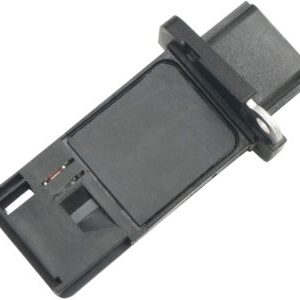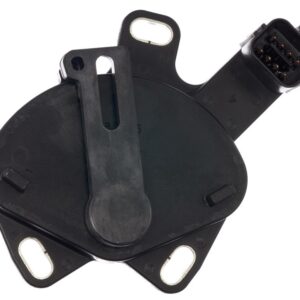**Unveiling the Crankshaft Sensor: The Engine’s Watchful Guardian**
In the intricate machinery of an internal combustion engine, where precision and timing are paramount, one unsung hero quietly performs a crucial task—the crankshaft sensor. Often overlooked amidst the cacophony of pistons and valves, this unassuming component plays a pivotal role in ensuring smooth engine operation and precise timing. Join us as we delve into the depths of crankshaft sensors and uncover their significance in the realm of automotive engineering.
**Understanding the Essence: What is a Crankshaft Sensor?**
A crankshaft sensor, also known as a crank sensor or engine speed sensor, is a vital component of the engine management system in modern vehicles. Positioned near the crankshaft, the sensor monitors the rotational speed and position of the crankshaft, providing crucial data to the engine control unit (ECU) or powertrain control module (PCM). This information allows the ECU to precisely control fuel injection, ignition timing, and other engine parameters for optimal performance and efficiency.
**The Significance of Engine Synchronization**
In the complex dance of combustion and motion within an engine, precise synchronization is essential for smooth operation and maximum power output. The crankshaft sensor serves as the engine’s eyes and ears, providing real-time feedback on crankshaft position and speed to ensure that fuel is injected and spark timing is optimized at the right moment in the engine’s cycle.
**The Silent Observer: How Does a Crankshaft Sensor Work?**
Despite its unassuming appearance, the crankshaft sensor employs sophisticated technology to fulfill its role effectively. Most crankshaft sensors utilize either a Hall effect sensor or a magnetic reluctance sensor to detect the position and speed of the crankshaft.
As the crankshaft rotates, the teeth or reluctor wheel attached to the crankshaft pass by the sensor, generating electrical signals that vary with crankshaft position and speed. The sensor sends these signals to the ECU, which interprets the data and adjusts engine parameters accordingly to ensure precise fuel delivery and ignition timing.
**The Unseen Benefits: Advantages of Crankshaft Sensors**
While crankshaft sensors may operate quietly behind the scenes, their impact on engine performance and reliability is undeniable. Here are some key advantages of crankshaft sensors:
1. **Optimized Engine Performance:** Crankshaft sensors enable precise control over fuel injection timing and ignition timing, optimizing engine performance, fuel efficiency, and emissions control.
2. **Improved Drivability:** By ensuring smooth engine operation and precise timing, crankshaft sensors contribute to smoother acceleration, reduced vibration, and enhanced drivability.
3. **Enhanced Diagnostics:** Crankshaft sensors play a crucial role in onboard diagnostics, allowing the ECU to detect and diagnose engine faults related to crankshaft position, such as misfires or timing errors.
4. **Prevention of Damage:** Proper synchronization provided by crankshaft sensors helps prevent engine damage caused by misfires, knocking, or timing errors, ensuring engine longevity and reliability.
**Looking Ahead: The Future of Engine Management Technology**
As automotive technology continues to evolve, so too will the field of engine management technology. Innovations in sensor design, integration with vehicle systems, and connectivity to advanced driver assistance systems (ADAS) may lead to even more responsive and intelligent engine management solutions in the future.
Furthermore, as the automotive industry transitions towards electrification and autonomous driving, crankshaft sensors will play a crucial role in optimizing engine performance, efficiency, and reliability in next-generation vehicles.
**In Conclusion: The Guardian of Engine Precision**
In the dynamic world of automotive engineering, where every component plays a vital role, crankshaft sensors emerge as silent but indispensable guardians of engine precision. Their unassuming presence belies their critical importance in ensuring smooth operation, optimal performance, and maximum efficiency. So, the next time you turn the key and feel the engine come to life with precision and power, remember to thank the unsung hero working diligently behind the scenes—the crankshaft sensor.
In stock (can be backordered)
$19,926.31
**Unveiling the Crankshaft Sensor: The Engine’s Watchful Guardian**
In the intricate machinery of an internal combustion engine, where precision and timing are paramount, one unsung hero quietly performs a crucial task—the crankshaft sensor. Often overlooked amidst the cacophony of pistons and valves, this unassuming component plays a pivotal role in ensuring smooth engine operation and precise timing. Join us as we delve into the depths of crankshaft sensors and uncover their significance in the realm of automotive engineering.
**Understanding the Essence: What is a Crankshaft Sensor?**
A crankshaft sensor, also known as a crank sensor or engine speed sensor, is a vital component of the engine management system in modern vehicles. Positioned near the crankshaft, the sensor monitors the rotational speed and position of the crankshaft, providing crucial data to the engine control unit (ECU) or powertrain control module (PCM). This information allows the ECU to precisely control fuel injection, ignition timing, and other engine parameters for optimal performance and efficiency.
**The Significance of Engine Synchronization**
In the complex dance of combustion and motion within an engine, precise synchronization is essential for smooth operation and maximum power output. The crankshaft sensor serves as the engine’s eyes and ears, providing real-time feedback on crankshaft position and speed to ensure that fuel is injected and spark timing is optimized at the right moment in the engine’s cycle.
**The Silent Observer: How Does a Crankshaft Sensor Work?**
Despite its unassuming appearance, the crankshaft sensor employs sophisticated technology to fulfill its role effectively. Most crankshaft sensors utilize either a Hall effect sensor or a magnetic reluctance sensor to detect the position and speed of the crankshaft.
As the crankshaft rotates, the teeth or reluctor wheel attached to the crankshaft pass by the sensor, generating electrical signals that vary with crankshaft position and speed. The sensor sends these signals to the ECU, which interprets the data and adjusts engine parameters accordingly to ensure precise fuel delivery and ignition timing.
**The Unseen Benefits: Advantages of Crankshaft Sensors**
While crankshaft sensors may operate quietly behind the scenes, their impact on engine performance and reliability is undeniable. Here are some key advantages of crankshaft sensors:
1. **Optimized Engine Performance:** Crankshaft sensors enable precise control over fuel injection timing and ignition timing, optimizing engine performance, fuel efficiency, and emissions control.
2. **Improved Drivability:** By ensuring smooth engine operation and precise timing, crankshaft sensors contribute to smoother acceleration, reduced vibration, and enhanced drivability.
3. **Enhanced Diagnostics:** Crankshaft sensors play a crucial role in onboard diagnostics, allowing the ECU to detect and diagnose engine faults related to crankshaft position, such as misfires or timing errors.
4. **Prevention of Damage:** Proper synchronization provided by crankshaft sensors helps prevent engine damage caused by misfires, knocking, or timing errors, ensuring engine longevity and reliability.
**Looking Ahead: The Future of Engine Management Technology**
As automotive technology continues to evolve, so too will the field of engine management technology. Innovations in sensor design, integration with vehicle systems, and connectivity to advanced driver assistance systems (ADAS) may lead to even more responsive and intelligent engine management solutions in the future.
Furthermore, as the automotive industry transitions towards electrification and autonomous driving, crankshaft sensors will play a crucial role in optimizing engine performance, efficiency, and reliability in next-generation vehicles.
**In Conclusion: The Guardian of Engine Precision**
In the dynamic world of automotive engineering, where every component plays a vital role, crankshaft sensors emerge as silent but indispensable guardians of engine precision. Their unassuming presence belies their critical importance in ensuring smooth operation, optimal performance, and maximum efficiency. So, the next time you turn the key and feel the engine come to life with precision and power, remember to thank the unsung hero working diligently behind the scenes—the crankshaft sensor.
| Weight | 0.03 kg |
|---|---|
| Warehouse | Inventory at warehouse 2 |



Get E-mail updates about our latest products and special offers.
Sensors and More is Jamaica’s ultimate online auto parts store. Established in 2020, we specialize in genuine electrical parts for Japanese, Read more…
Reviews
There are no reviews yet.